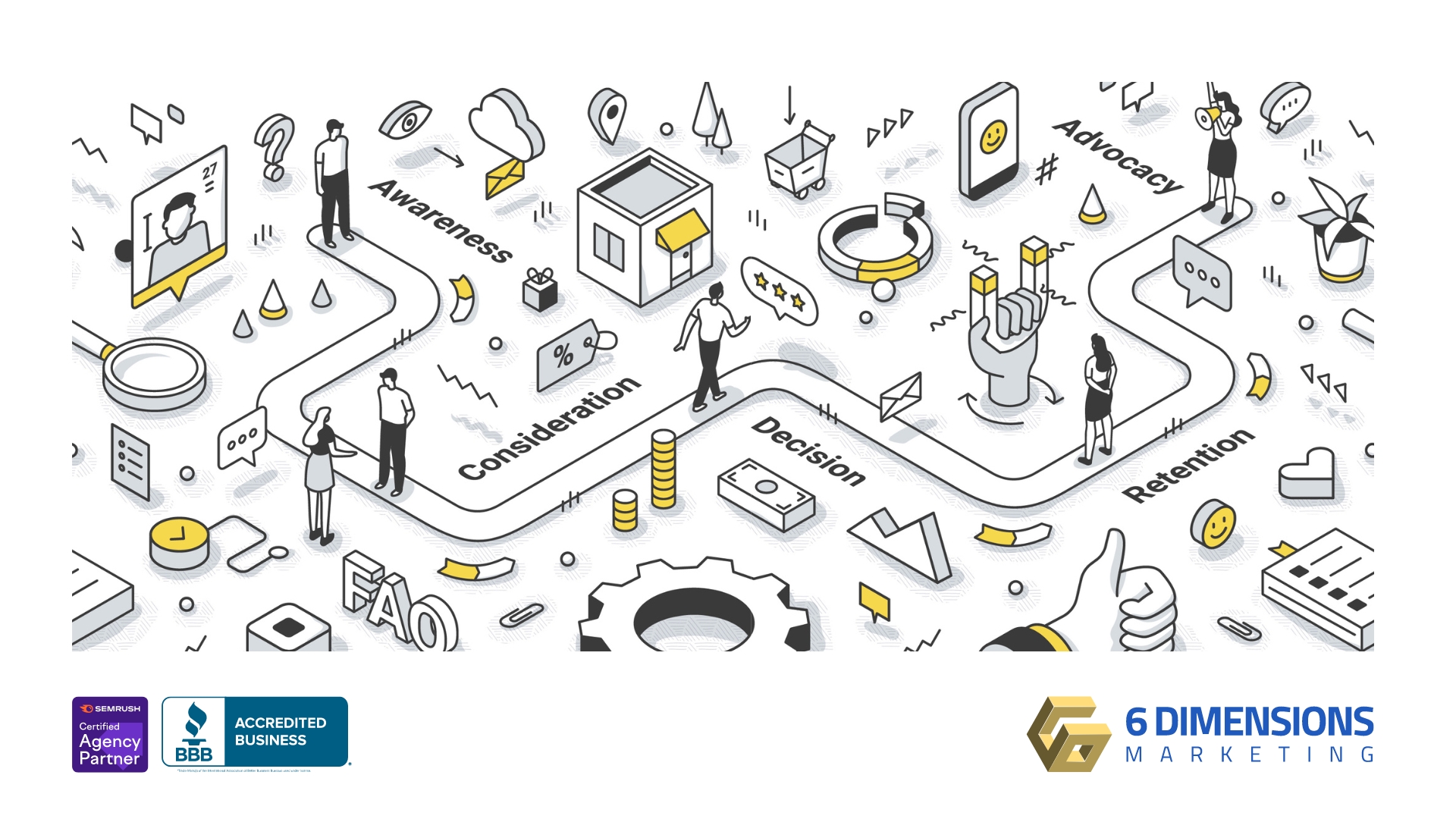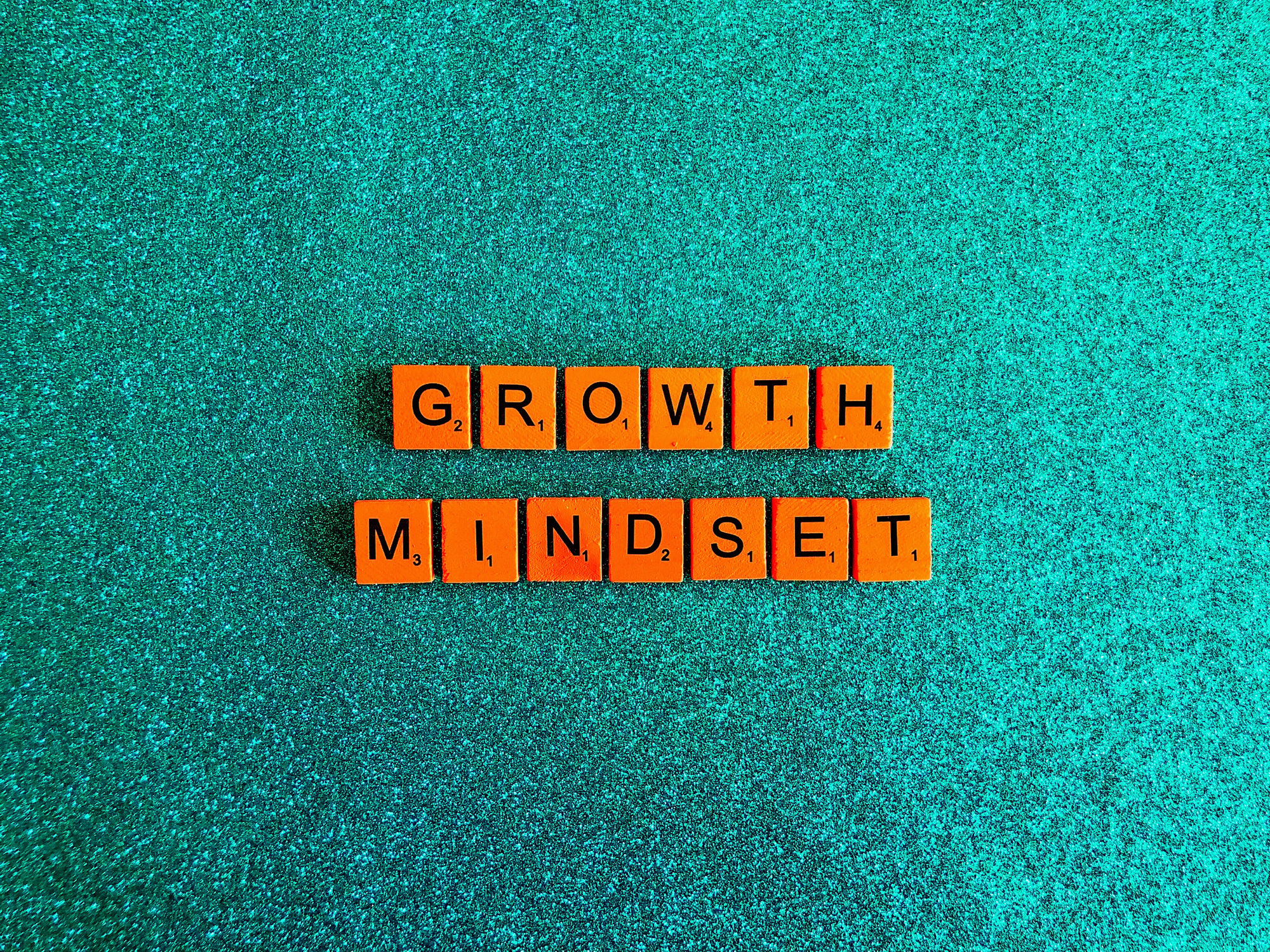Introduction
In today’s competitive landscape, marketing alone isn’t enough to grow a sustainable business. Many founders and marketing managers struggle with disconnected tactics, unclear messaging, underperforming campaigns, or lead generation efforts that don’t translate into long-term revenue. What they often lack is not a better ad or another tool—but a strategic system that aligns marketing with the broader business ecosystem. That’s exactly where the 6 Dimensions Marketing Concept and the 6 Dimensions Growth Framework come together.
The 6 Dimensions Marketing Concept was developed to help businesses move away from random acts of marketing and instead implement a structured, customer-centric approach. It focuses on six core pillars that guide everything from content strategy and customer experience to data-driven decision-making and organizational alignment. It’s a powerful marketing lens—but on its own, it can only take a business so far.
To build a scalable, high-performing company, marketing must be part of a wider system—one that connects strategy, operations, sales, and customer retention. That’s where the 6 Dimensions Growth Framework comes in. This framework expands on the marketing concept and builds a full-stack growth engine that spans across business functions. It outlines how to Establish a solid foundation, Engage the market with precision, and Retain customers with systems that deliver real value over time.
When used together, the two frameworks offer a powerful, end-to-end growth model. The marketing concept gives you clarity on how to position, promote, and engage. The growth framework ensures those efforts aren’t siloed—they’re supported by infrastructure, aligned with business objectives, and optimized for profitability. Marketing becomes part of a larger growth engine—one that doesn’t just generate leads, but converts them into loyal customers, builds long-term brand equity, and drives consistent revenue growth.
This enhanced outline aims to unify these two systems into one strategic roadmap. You’ll see how each marketing dimension plugs into a wider growth engine—from customer experience feeding into retention systems, to content strategy aligning with sales enablement, to data analytics powering decisions across the business.
The result is not just better marketing. It’s a smarter, leaner, and more profitable business model.
Whether you’re a startup founder building your first lead engine or a scale-up looking to fix a broken funnel, integrating the 6 Dimensions Marketing Concept with the 6 Dimensions Growth Framework gives you clarity, structure, and momentum. It helps you go beyond funnels and tactics—and into sustainable, strategic growth execution.
In the following sections, we’ll break down each dimension and show how to map them across the growth framework. You’ll walk away with a blueprint that can be applied immediately to build an aligned, data-driven, and customer-first business.
Overview of the Original 6 Dimensions Marketing Concept
The 6 Dimensions Marketing Concept was created to bring order to the chaos many businesses face when trying to grow through digital marketing. Instead of jumping from one shiny tactic to the next—like running Facebook ads one week, launching a blog the next, or experimenting with AI tools without a clear plan—this framework offers structure, focus, and alignment. It outlines six key dimensions that, when executed together, form a holistic and high-performing marketing system.
Let’s take a closer look at each of the six dimensions:
1. Customer Experience
At the core of any great marketing strategy is the customer experience. This dimension focuses on mapping and optimizing every touchpoint a prospect or customer has with your brand—from discovery to decision, and beyond. It’s about creating seamless, personalized, and emotionally engaging experiences that build trust and loyalty. Whether someone is browsing your website, opening your emails, or speaking with your team, their experience should feel intentional and consistent.
2. Content Strategy
Content is not just blog posts and social media captions—it’s the fuel that drives awareness, education, and conversions. This dimension ensures that your content is strategic, audience-focused, and aligned with your brand positioning. It covers everything from thought leadership and storytelling to video, SEO, email sequences, and sales enablement assets. Great content builds credibility, shortens the sales cycle, and keeps your brand top-of-mind.
3. Data & Analytics
You can’t improve what you don’t measure. The analytics dimension ensures that your marketing efforts are guided by data—not guesswork. It involves setting clear KPIs, using tools to track performance across all campaigns and channels, and analyzing behavior trends to make smarter decisions. This dimension empowers you to identify what’s working, what’s not, and where to optimize for better ROI.
4. Technology & Automation
Modern marketing is powered by smart tools and systems. This dimension focuses on building a technology stack that automates repetitive tasks, improves efficiency, and enhances the user experience. From CRM platforms and email automation to AI-powered insights and lead scoring, the right tech enables your team to scale faster without losing the personal touch.
5. Channel Mix
Not all marketing channels are created equal. This dimension helps you strategically choose and balance the platforms you use to reach and convert your audience—whether that’s organic SEO, paid ads, email marketing, social media, or offline strategies. Rather than spreading efforts thin, you focus on the channels that deliver the most value, based on your goals and audience behavior.
6. Organizational Alignment
Marketing doesn’t operate in a vacuum. This final dimension ensures that your marketing efforts are aligned with sales, product, leadership, and overall business objectives. It’s about having a shared vision, open communication, and a unified strategy. When all teams are rowing in the same direction, your marketing becomes more effective—and your growth, more sustainable.
Together, these six dimensions form the backbone of a modern, scalable marketing system. But marketing is only one piece of the business puzzle. In the next section, we’ll explore how these dimensions integrate with the broader 6 Dimensions Growth Framework to fuel long-term business success.
Overview of the 6 Dimensions Growth Framework
While the 6 Dimensions Marketing Concept lays the groundwork for a powerful and structured marketing approach, true business growth requires more than just marketing. That’s where the 6 Dimensions Growth Framework comes in. Designed as a comprehensive business growth engine, this framework extends beyond marketing into strategy, sales, systems, automation, and retention. It gives founders, operators, and marketers a full-stack system to build, scale, and sustain a thriving business—no matter the industry.
The 6 Dimensions Growth Framework is built around three core growth phases: Establish, Engage, and Retain. Each phase represents a critical component in the customer lifecycle and is supported by foundational elements like messaging, sales systems, and automation infrastructure.
1. Establish (Clarity, Positioning & Foundation)
Growth begins with clarity. This dimension is all about understanding the market, identifying your ideal customer, developing your unique positioning, and setting a clear strategic direction. It includes foundational work like brand messaging, competitor analysis, product-market fit, offer design, and go-to-market strategy. Without this step, marketing becomes guesswork and sales feel misaligned. A strong foundation here sets the stage for consistent growth.
2. Engage (Lead Generation, Funnel Execution & Sales Enablement)
Once the foundation is set, it’s time to generate demand. The Engage dimension covers how you attract, nurture, and convert leads. This includes creating full-funnel marketing campaigns, lead magnets, email automations, ad campaigns, landing pages, and webinars. It also focuses on aligning marketing efforts with sales teams to ensure leads are properly qualified and followed up with. Sales enablement plays a big role here—arming sales teams with the messaging, tools, and content they need to close deals effectively.
3. Retain (Onboarding, Loyalty & Repeat Revenue)
Most businesses overlook the importance of retention. This dimension ensures that new customers don’t just stop at the sale—they stay, return, and refer others. Retain focuses on building structured onboarding systems, delivering real customer success, gathering feedback, and implementing loyalty and referral loops. It also includes upselling, cross-selling, and proactive communication. It’s about maximizing the value of every customer and reducing churn over time.
Supporting Layers:
To make all of this possible, the growth framework also includes key enablers:
-
Messaging & Positioning: Clear, consistent messaging that speaks to your target audience across all touchpoints—landing pages, ads, sales conversations, and onboarding flows.
-
Sales Systems: Documented sales processes, scripts, pipelines, and CRMs that help turn leads into customers consistently and predictably.
-
Automation & Infrastructure: The tech backbone that powers the entire system. From automation platforms and integrations to dashboards and reporting tools, this ensures the business can scale efficiently without compromising quality.
Together, these six dimensions form a closed-loop system that attracts the right people, converts them effectively, and keeps them coming back. It allows business owners to get out of the weeds and into a strategic role, focusing on growth that’s not only fast but sustainable.
In the next section, we’ll explore how the original 6 Dimensions of Marketing fit into this broader framework—and how integrating them creates a powerful synergy that amplifies results across your entire business.
Mapping and Enhancing the Marketing Concept Through the Growth Framework
The true power of strategic growth lies in integration—not just within your marketing department, but across your entire business. While the 6 Dimensions Marketing Concept provides a solid foundation for marketing execution, it reaches its full potential only when connected to the broader 6 Dimensions Growth Framework. In this section, we’ll explore how each marketing dimension maps directly into the wider growth system—creating a seamless link between marketing, sales, operations, and customer success.
1. Customer Experience → Retain (Onboarding, Loyalty & Retention Systems)
Customer experience doesn’t end at conversion—it continues long after the sale. Within the Growth Framework, this aligns perfectly with the Retain phase. By connecting marketing-led user journey design to structured onboarding, feedback loops, and loyalty systems, you ensure that every touchpoint is part of a larger experience strategy. This approach turns satisfied customers into loyal advocates and increases lifetime value.
2. Content Strategy → Engage (Lead Generation & Funnel Execution)
Content drives engagement. When plugged into the Engage phase of the Growth Framework, content becomes more than just educational or promotional—it becomes a tool for demand generation and conversion. Think landing pages, lead magnets, email sequences, retargeting content, and sales enablement material. Every piece of content is aligned with the buyer’s journey and built to move prospects forward in the funnel with purpose.
3. Data & Analytics → Automation & Optimization Infrastructure
The analytics dimension of marketing reaches full maturity when it’s embedded into the infrastructure layer of the Growth Framework. Here, tracking isn’t siloed—it spans across platforms and systems to create a unified view of performance. Marketing data feeds into sales dashboards, customer journey maps, and retention metrics. This feedback loop enables rapid testing, optimization, and scaling—ensuring that decisions are always data-driven.
4. Technology & Automation → Automation Infrastructure & Sales Systems
Modern marketing relies on smart tech—but that tech must serve a greater system. Within the Growth Framework, marketing automation connects directly to CRM workflows, lead scoring systems, calendar integrations, proposal tools, and customer success platforms. It’s not just about running an email drip—it’s about enabling the entire business to operate with speed, consistency, and personalization.
5. Channel Mix → Engage (Cross-Channel Execution & Attribution)
Choosing the right channels is critical, but success lies in coordination. The Growth Framework’s Engage phase ensures your channel mix (Google Ads, SEO, Meta, email, webinars, etc.) operates as a single system. Cross-channel attribution, unified messaging, and funnel consistency become standard. Every platform supports the others, and customer behavior is tracked across them all—creating a cohesive journey from first click to conversion.
6. Organizational Alignment → Establish (Strategic Clarity & Cross-Department Unity)
True growth begins with alignment. In the Establish phase of the Growth Framework, the marketing team aligns with leadership, sales, and operations. Messaging is agreed upon. KPIs are shared. Goals are unified. With this structure, marketing isn’t operating in a silo—it’s driving strategic initiatives alongside every other department, contributing directly to business growth and not just traffic or leads.
When these elements are connected, the result is a closed-loop growth engine—one where marketing fuels revenue, not just visibility. In the next section, we’ll walk through a practical step-by-step guide to putting this integration into action.
Step-by-Step Integration Guide
Understanding the theory behind the 6 Dimensions Marketing Concept and the 6 Dimensions Growth Framework is only half the battle. The real transformation happens when you apply it. This section walks you through a clear, actionable process to implement both frameworks side-by-side—turning strategic alignment into measurable business growth.
Step 1: Audit & Gap Analysis
Begin by assessing your current business and marketing systems. Examine each of the six marketing dimensions and evaluate their effectiveness:
-
Is your customer experience seamless across all touchpoints?
-
Does your content strategy align with your audience and funnel stages?
-
Are you using data and analytics to make informed decisions?
-
Is your technology stack integrated and automated?
-
Are you clear on your channel mix performance?
-
Is your marketing aligned with sales, product, and leadership?
Then, map these against the business-wide growth framework. Where are your strongest systems? Where are the disconnects? This dual-layered gap analysis will help you pinpoint the high-leverage opportunities for improvement.
Step 2: Define Your Strategic Objectives
Clarity is the foundation of growth. Set 3, 6, and 12-month goals across all six growth dimensions:
-
What revenue or customer acquisition goals are realistic?
-
What experience do you want your customers to have?
-
How many leads do you need weekly/monthly to support your sales team?
-
Which channels will drive the most efficient growth?
Align your brand positioning, value proposition, and core messaging across both marketing and sales efforts. This alignment ensures that every campaign, piece of content, or conversation supports your business goals.
Step 3: Structure the Execution Plan
With your roadmap defined, begin structuring implementation using the two frameworks in tandem:
Marketing Execution
-
Create a full-funnel content strategy, including lead magnets, nurture sequences, retargeting ads, and educational content.
-
Implement or upgrade your website and landing pages to improve conversion and SEO.
-
Launch multi-channel campaigns based on your defined audience and their buyer journey.
Sales & Systems Execution
-
Build or refine your CRM and pipeline processes to support incoming leads.
-
Align marketing automations (e.g., form triggers, lead scoring, nurture flows) with your sales follow-up cadence.
-
Set up dashboards to track performance across lead generation, sales conversion, and retention.
Retention & Experience Execution
-
Design onboarding flows for new customers that ensure satisfaction and reduce churn.
-
Build loyalty systems like referral programs, rewards, or VIP experiences.
-
Collect and act on feedback at every stage.
Step 4: Monitor, Optimize & Scale
This is where the analytics and automation dimensions shine. Use your data to measure:
-
Lead quality and conversion rates
-
Funnel drop-off points
-
ROI by channel and campaign
-
Customer lifetime value and churn rates
Review dashboards weekly or monthly to iterate quickly. Use insights to optimize campaigns, sales follow-ups, and retention strategies in real-time.
By following this structured integration guide, you’re not just “doing marketing”—you’re building a unified growth system that scales with your business. In the next section, we’ll walk through a real-world example to illustrate how these frameworks play out in practice.
Case Study: Applying the 6 Dimensions Framework in a Service Business
To truly understand the impact of integrating the 6 Dimensions Marketing Concept with the 6 Dimensions Growth Framework, let’s walk through a practical example. In this case study, we’ll explore how a boutique service business—a digital marketing agency—applied these frameworks to achieve predictable growth, streamline operations, and boost client lifetime value.
Background
The agency had a solid client base but was struggling with inconsistent lead flow, long sales cycles, and high client churn. Their marketing was scattered, relying on referrals, occasional social media posts, and a few Google Ads campaigns. The sales process was informal, and onboarding new clients often felt rushed and inconsistent. There was no clear growth system—just isolated tactics.
They decided to implement the combined 6 Dimensions model to realign their operations and build a scalable system.
Step 1: Establish (Strategy, Messaging, and Positioning)
Using the Establish phase of the Growth Framework, the agency first clarified its positioning. They specialized in helping B2B SaaS startups with growth marketing—but their messaging didn’t reflect this niche. They redefined their unique selling proposition (USP), updated their website copy, and created a brand guide that aligned with their ideal client.
Simultaneously, they audited their marketing using the Marketing Concept. They discovered major gaps in customer experience and data tracking, and a lack of alignment between content and funnel stages.

Step 2: Engage (Lead Generation, Content & Sales Systems)
Next, they built a full-funnel content strategy that included:
-
Top-of-funnel SEO blog content and LinkedIn posts to drive awareness
-
Mid-funnel lead magnets like a “SaaS Growth Checklist” to capture emails
-
Bottom-of-funnel case studies and sales enablement decks
They automated email nurturing flows using ActiveCampaign and connected all forms to their CRM (HubSpot). On the sales side, they implemented a structured pipeline with automated reminders, pipeline stages, and templated follow-ups—finally giving the sales team consistency.
Their channel mix was optimized to focus on two high-performing platforms: LinkedIn and Google Search Ads, both directly aligned with where their target audience was most active.
Step 3: Retain (Customer Experience & Loyalty Loops)
To improve retention, they redesigned their onboarding process with clear milestones, a kickoff call checklist, and automated client updates via Slack. Every project started with defined KPIs and a shared dashboard.
They added quarterly strategy reviews and implemented Net Promoter Score (NPS) surveys to gather feedback. Satisfied clients were invited to referral and affiliate programs, creating a powerful loyalty loop that turned their best customers into advocates.
Results
Within four months of implementing the integrated framework:
-
Lead volume increased by 60%, with a 32% improvement in lead-to-close rate
-
Onboarding time was reduced by 40%, and customer satisfaction rose significantly
-
Client retention increased from 6 months to 10+ months on average
-
Monthly recurring revenue grew by 48%
This case study illustrates how combining both frameworks transforms marketing into a revenue-driving, client-retaining engine. In the next section, we’ll explore the key benefits of adopting this unified approach across your business.
Benefits of a Unified Framework
Adopting the 6 Dimensions Marketing Concept alone can significantly enhance a company’s ability to attract and convert leads. But when it’s integrated into the broader 6 Dimensions Growth Framework, the benefits compound—creating a truly scalable, aligned, and sustainable growth engine. This unified approach connects marketing, sales, operations, and retention into one seamless system. Let’s explore the core benefits of this integration and why it gives businesses a serious competitive edge.
1. Strategic Clarity Across the Business
One of the most immediate benefits is clarity. When marketing operates within a unified growth framework, every campaign, message, and tactic is tied to a larger business goal. Teams no longer work in silos or guess what matters most—they’re guided by a shared vision and strategic roadmap. Positioning is consistent. Messaging is aligned. KPIs are clear. This focus leads to better decision-making and fewer wasted resources.
2. Stronger Lead Generation and Higher Conversion Rates
With a structured approach to content, channels, and data, your marketing becomes more precise and impactful. You’re not just creating content—you’re creating content that supports demand generation at each stage of the funnel. Lead magnets, nurture emails, retargeting ads, and sales assets all work together to move prospects closer to a decision. The result? Higher quality leads, increased engagement, and stronger conversion rates.
3. Sales and Marketing Alignment
One of the most common breakdowns in growing businesses is the gap between sales and marketing. This unified framework solves that. Sales teams are equipped with messaging and content that directly supports conversations. CRM workflows are designed to reflect both marketing intent and sales processes. Lead scoring, follow-up sequences, and feedback loops ensure that marketing and sales work together as one integrated growth team.
4. Seamless Customer Experience and Increased Retention
Growth isn’t just about acquisition—it’s about delivering a great experience that turns customers into loyal brand advocates. When the Customer Experience and Retain dimensions work together, you create consistent, personalized experiences throughout the customer lifecycle. Onboarding becomes smoother. Communication becomes proactive. Support systems and loyalty programs help reduce churn and extend customer lifetime value. In other words, your back-end systems become just as strategic as your front-end marketing.
5. Scalable Systems with Less Manual Work
With a strong focus on technology and automation, the unified framework ensures that your business isn’t limited by time or team size. Lead qualification, email follow-ups, onboarding tasks, and performance tracking can all be automated—freeing up time for strategic work. This efficiency doesn’t just reduce overhead—it makes scaling possible without losing the quality of customer interaction.
6. Holistic ROI and Business Visibility
Finally, perhaps the most important benefit is visibility. You’ll be able to see, in real time, what’s driving growth—whether it’s a particular ad campaign, sales process, or onboarding experience. With shared analytics dashboards and integrated tools, performance is no longer a mystery. You’re able to track marketing ROI, customer acquisition cost, churn rates, and lifetime value in one unified system.
In the next section, we’ll wrap up with a final call to action—and guide you on how to start applying this framework to your own business.
Conclusion
In today’s fast-paced business landscape, fragmented marketing efforts, misaligned teams, and scattered tools are no longer sustainable. Growth doesn’t come from tactics alone—it comes from systems. By integrating the 6 Dimensions Marketing Concept with the 6 Dimensions Growth Framework, you’re no longer playing the short game of marketing wins. You’re building a long-term, holistic, and scalable growth engine.
This unified framework enables businesses to create a seamless flow from awareness to loyalty. Every touchpoint—from the first ad to post-sale communication—is intentional, strategic, and connected. Marketing isn’t just about driving traffic anymore; it becomes a central force in the business’s success, tied directly to revenue, retention, and reputation.
By embedding marketing within the wider growth framework, you gain the ability to:
-
Align strategy with execution across all departments
-
Drive consistent, high-quality lead generation that fuels sales
-
Deliver a world-class customer experience that encourages retention and referrals
-
Optimize performance through data, automation, and clear KPIs
-
Build a system that scales with you—without increasing chaos or headcount
And most importantly, you remove the guesswork. You’re no longer reliant on trends, quick fixes, or hope marketing. You’re guided by a proven structure that adapts to your business stage, audience behavior, and market conditions.
Whether you’re a founder wearing multiple hats, a marketing leader trying to unify efforts across teams, or an agency looking to offer more holistic solutions to clients—this framework gives you the clarity and control to build and grow with confidence.
Where to Begin
Start with a self-assessment. Use the six dimensions from both frameworks as your checklist:
-
Is your brand clearly positioned in the market?
-
Are your campaigns aligned with a full-funnel content and conversion strategy?
-
Do your sales and marketing teams operate from the same messaging playbook?
-
Are you tracking the right data and using it to optimize?
-
Is your technology stack integrated, automated, and scalable?
-
Do your clients or customers feel supported long after the sale?
Once you’ve identified the gaps, prioritize your next steps:
-
Clarify your strategy using the Establish phase.
-
Create or refine your marketing execution plan with the six marketing dimensions.
-
Build systems and automations to support sales, onboarding, and retention.
-
Measure, optimize, and grow using integrated analytics dashboards.
If you’re serious about growing a leaner, smarter, and more profitable business—this is the blueprint.
And you don’t have to go it alone.
At 6 DIMENSIONS, we help founders, teams, and agencies implement this exact framework—tailored to their goals, industry, and growth stage. From audits and strategic planning to done-for-you campaigns and automation builds, we bring structure, momentum, and measurable results.
👉 Ready to grow with clarity and confidence? Book a consultation and Let’s build your growth engine, together.





















